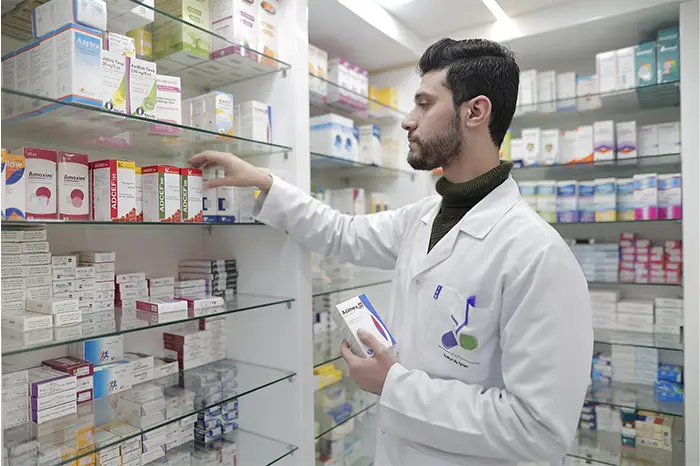A career as a pharmacy technician offers the opportunity to work in a dynamic, patient-centered field with strong job growth and solid earning potential. According to the U.S. Bureau of Labor Statistics, pharmacy technician jobs are projected to grow by 7% from 2023 to 2033, faster than average.
Certification through the Pharmacy Technician Certification Board (PTCB) is one of the most recognized ways to enter this profession and stand out to employers.
The PTCB credential demonstrates your knowledge, professionalism, and readiness to assist pharmacists in various healthcare settings. But passing the PTCB exam requires preparation, strategy, and an understanding of what to expect.
We’ll break down the process of getting certified—from study tools and eligibility to long-term benefits.
Preparing For The PTCB Exam: Study Tools And Practice Tests That Make The Difference
To succeed on the PTCB exam, detailed preparation is key—and that starts with the right study materials, including high-quality practice tests.
Why Ptcb Practice Tests Are Vital
Practice tests aren’t just for gauging how much you know—they’re strategic tools to accelerate learning. They simulate real test conditions, highlight weak areas, and build your confidence.
One of the best online resources is Medical Hero’s PTCB practice test platform, which offers updated, exam-like questions and immediate feedback. These tools help reinforce core concepts in pharmacology, law, safety, and order processing.
By taking multiple timed quizzes, you develop familiarity with the structure of the actual exam and learn to manage your time effectively. Reviewing the detailed explanations behind each answer also strengthens understanding rather than promoting rote memorization. This can be especially helpful in sections where you must interpret drug classifications, calculate dosages, or determine regulatory compliance.
The most successful test-takers tend to follow a pattern: study the material in small chunks, test knowledge with practice exams, review incorrect answers, and repeat the cycle. Using targeted tests—focusing on one domain at a time—can enhance retention and reduce overwhelm.
Understanding The PTCB Certification Process
The path to becoming certified through the PTCB is structured and transparent. Understanding each phase allows you to avoid surprises and maximize your preparation.
1. Meet The Eligibility Requirements
To sit for the PTCB exam, you must:
- Have a high school diploma or equivalent
- Comply with all PTCB certification policies
- Have no felony convictions or drug-related misdemeanors
- Disclose any past criminal or State Board of Pharmacy actions
As of 2020, the PTCB also strongly encourages completion of a pharmacy technician training program accredited by the ASHP (American Society of Health-System Pharmacists) or the equivalent.
2. Apply And Schedule Your Exam
Once eligibility is confirmed, create an account on the official PTCB website and complete the certification application.
The current application fee is $129. After approval, you’ll receive an Authorization to Schedule (ATT) email, enabling you to book a test appointment at a Pearson VUE testing center or via an online proctored exam.
3. Take The Exam
The PTCB exam, officially called the Pharmacy Technician Certification Exam (PTCE), consists of 90 multiple-choice questions. You have two hours to complete it, and the questions cover:
- Medications (40%)
- Federal Requirements (12.5%)
- Patient Safety and Quality Assurance (26.25%)
- Order Entry and Processing (21.25%)
Passing requires a scaled score of at least 1,400 out of a possible 1,600. Results are usually available immediately after testing.
What Happens After You Pass The PTCB Exam

Certification is just the beginning. Once you’re PTCB certified, new opportunities and responsibilities follow.
Gaining A Competitive Advantage In The Job Market
Many employers—especially in hospitals and mail-order pharmacies—require or prefer certified technicians. Holding the CPhT (Certified Pharmacy Technician) credential signals to employers that you’re committed to high standards and ongoing education.
This often translates into better job prospects, higher pay, and increased responsibilities such as inventory management or medication therapy support.
In retail environments like CVS and Walgreens, certification can accelerate promotions into lead tech or supervisory roles. In institutional settings, it may allow you to assist in sterile compounding or automated dispensing system operations.
State Licensing And Registration
Certification does not automatically grant the right to practice in every state. You may still need to register or obtain a license through your state’s Board of Pharmacy.
Some states accept PTCB certification as proof of qualification, while others may require additional steps, such as background checks or continuing education. Be sure to research your local requirements in advance.
Maintaining Certification
To stay certified, you must complete 20 hours of continuing education (CE) every two years, including one hour in pharmacy law and one hour in patient safety. PTCB offers CE activities directly through their platform, but you can also complete them through accredited institutions or professional pharmacy organizations.
If your certification expires, you may be required to retake the PTCE or pay late renewal fees. Staying current with CE ensures that your knowledge evolves alongside pharmacy best practices and regulations.
Career Paths Available With PTCB Certification

A certified pharmacy technician isn’t limited to working at a local drugstore. Certification opens doors to a wide variety of settings and specialties.
Retail Pharmacy Technician
Retail pharmacies—such as those in supermarkets, drugstores, and big-box retailers—employ the largest number of pharmacy technicians.
Responsibilities here typically include filling prescriptions, assisting customers, processing insurance claims, and managing inventory. This setting is fast-paced and customer-focused.
Hospital Or Clinical Pharmacy Technician
Working in a hospital setting generally involves preparing IV medications, compounding sterile products, handling medication carts, and collaborating closely with pharmacists and nurses. The clinical environment is more technical and regulated, requiring strict attention to detail and safety.
Specialty Roles And Advancement
PTCB certification can be the foundation for specialization. Examples include:
- Sterile Compounding Tech: Focuses on IV mixtures and hazardous drug handling
- Inventory/Procurement Specialist: Manages pharmaceutical stock levels and ordering
- Billing and Reimbursement Tech: Works with insurers and pharmacy benefit managers
- Medication History Technician: Conducts patient interviews for medication reconciliation
In addition, certified techs may choose to pursue further PTCB credentials such as the CSPT (Certified Compounded Sterile Preparation Technician) or transition into roles in research, education, or regulatory compliance.
Endnote
Becoming a certified pharmacy technician via the PTCB is a practical and valuable step for individuals who want to enter a healthcare role without committing to years of schooling.
The PTCB credential enhances your credibility, expands your employment opportunities, and sets a foundation for growth in a highly respected field.





